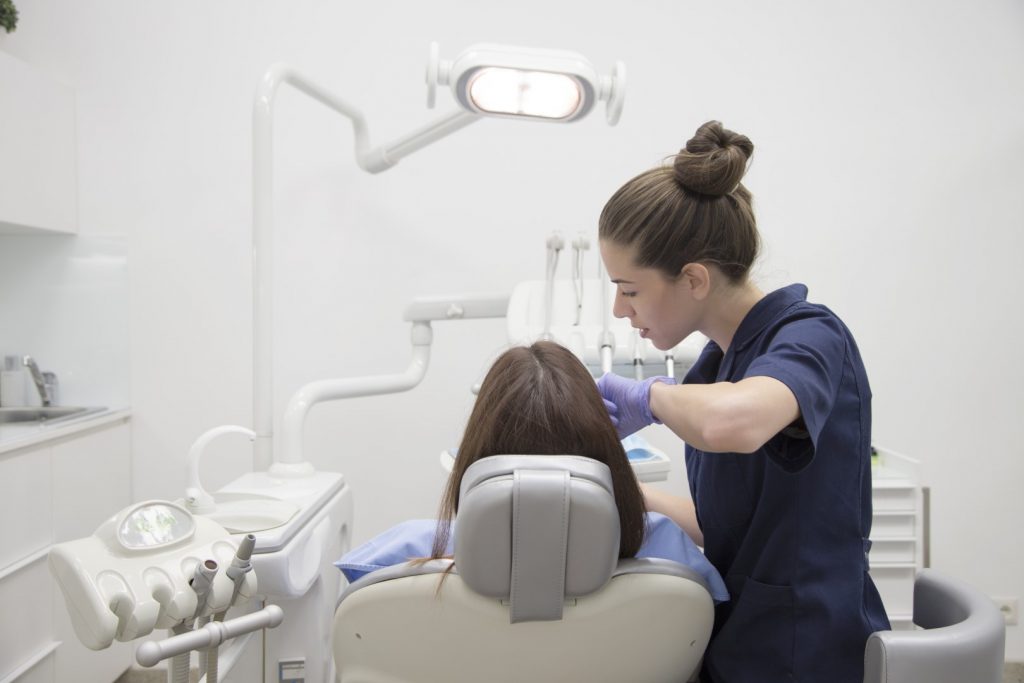Resource Library
Start Reading

One question patients at Penn Dental Family Practice (PDFP) ask is, “Can you still get cavities with fillings?” They hope dentists’ ways of filling tooth decay, or of “capping” weakened and damaged teeth with crowns, offer foolproof protection against future decay.
Fillings and crowns effectively treat existing decay and play some part in preventing decay. But they aren’t guaranteed you’ll never have cavities in those teeth again.

What does a tooth filling or crown do? Both eliminate the pain tooth decay causes and restore teeth’s functionality and structure. Patients can eat and chew food properly again, speak as they usually do, and go about daily activities comfortably and confidently.
Dental fillings and dental crowns preserve and protect natural teeth.
Materials commonly used include porcelain, composite resin, metal alloys, and gold. Some fillings are an amalgam (mixture) of liquid (elemental) mercury and a powdered silver alloy.
The processes for filling a tooth or placing a dental crown are similar. First, the dentist will numb the area around the tooth using a local anesthetic. Then, they will remove any decay or damage from the tooth and shape the tooth in preparation for the filling or crown. Finally, they will ensure the filling or crown is securely in place and functions effectively.

Dental fillings do get rid of cavities that have already formed. Depending on the material used and with proper care, they can offer years of protection. Composite material generally lasts at least five to seven years. Amalgam fillings can last 10 to 15. Porcelain and gold can last even longer.
But the answer to the question “Can you still get cavities with fillings?” is “Yes.”
Recurrent decay (also called secondary or recurrent caries) can occur under or around fillings. It happens when there’s a breakdown or failure at the restoration’s margin, allowing bacteria to infiltrate it.
Tooth enamel is the hardest substance in the human body, but the enamel around a filling is vulnerable. The filling material may not be as strong as natural enamel. Over time, wear and tear may cause it to break down, leaving the surrounding enamel exposed and at risk of damage.
Additionally, the process of filling tooth decay requires removing some healthy enamel to make space for the filling. This process can weaken the tooth’s overall structure and make it more susceptible to cracks and fractures.
On average, dental crowns can last anywhere from 5 to 15 years. With proper oral hygiene and regular dental checkups, they can potentially last longer. But recurrent decay is a risk with crowns, too.
Crowns don’t completely seal off the tooth beneath from bacteria and plaque. Over time, bacteria can accumulate around the crown’s edges, leading to plaque buildup and subsequent decay.
Several other factors can contribute to recurrent decay around both crowns and fillings:

Although you can still get cavities with fillings and crowns, you can take several steps to reduce your risk.
Additionally, regular dental checkups with the expert dentists here at PDFP are crucial for monitoring your restored teeth’s health.
During checkups, your dentist can examine the teeth for any signs of deterioration or new problems. They can also ensure the dental restorations are holding up as expected and make necessary adjustments or repairs.
Do you need to make an appointment with our skilled and compassionate dentists? Schedule your appointment online now or call us at 215-898-PDFP (7337).
If you want more information about how flossing in between trips to the dentist’s office can make a dramatic difference to your oral health, download our free eBook, A No-Nonsense Guide to Flossing: How To Conquer This Important Daily Habit.